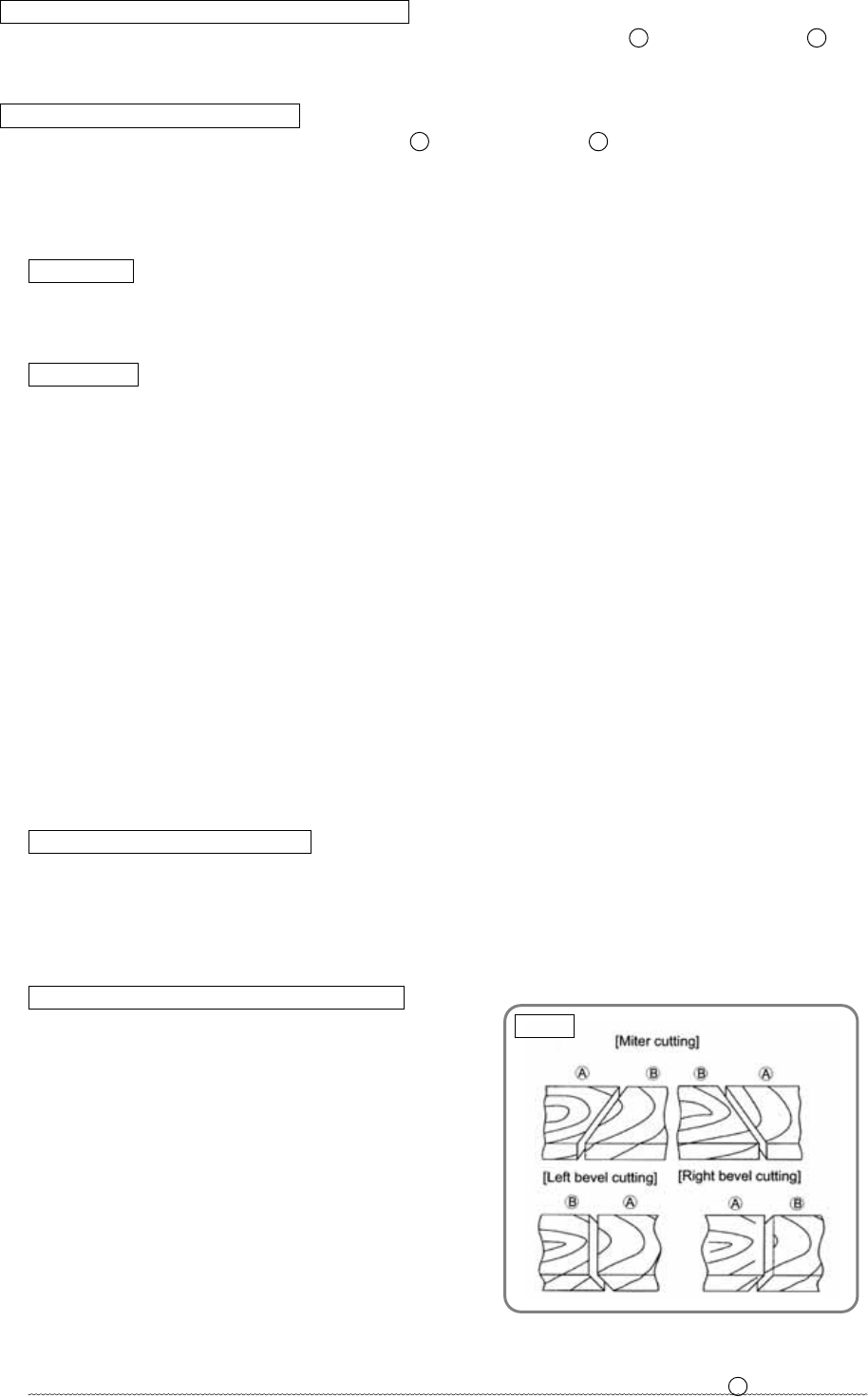
-20-
NOTE:
Techniques to avoid unwanted cutting marks
Uneven and unwanted cutting marks can be avoided by shifting from 3 press cutting to 4 slide
cutting in a single, uninterrupted motion.
Techniques to avoid burnt marks
Burnt marks can be avoided by shifting from 3 press cutting to 4 slide cutting in a single,
uninterrupted motion in the same manner as the above, applying a slight lateral force toward the
cut-off side. Advise the customer that he or she will quickly develop a "feel" and skill for smooth
cutting after performing two or three practice cutting operations.
(5) Miter cutting
Miter cutting is accomplished by turning the turn table. (For details, please refer to the Instruction
Manual "Miter cutting procedures.")
(6) Bevel cutting
Bevel cutting of 0 - 45° to the left or 0 - 5° to the right is accomplished by inclining the motor head
section. (For details, refer to the Instruction Manual "Bevel cutting procedures.")
WARNING: When the workpiece is secured on the left or right side of the blade, the short cut-off
portion will come to rest on the right or left side of the saw blade. Always turn the power
off and let the saw blade stop completely before raising the handle from the workpiece.
If the handle is raised while the saw blade is still rotating, the cut-off piece may become
jammed against the saw blade causing fragments to scatter about dangerously. When
stopping the bevel cutting operation halfway, start cutting after pulling back the motor
head to the initial position. Starting from halfway, without pulling back, causes the
safety cover to be caught in the cutting groove of the workpiece and to contact the saw
blade.
CAUTION: When cutting a workpiece of 50 mm (1-15/16”) height in the left 45° bevel cutting position
or a workpiece of 70 mm (2-3/4”) height in the right 5° bevel cutting position, adjust the
lower limit position of the motor head so that the gap between the lower edge of the
motor head and the workpiece will be 2 to 3 mm (5/64" to 1/8") at the lower limit position
(refer to the Instruction Manual "Checking the saw blade lower limit position").
(7) Compound (miter + bevel) cutting
Compound (miter + bevel) cutting can be accomplished by combining the miter cutting and bevel cutting
operations described in paragraphs (5) and (6) above. (For details, refer to the Instruction Manual
"Compound cutting procedures.") When the saw blade is inclined 45° to the left, the turn table can be
turned up to 45° to the left and right.
(8) Cut surface quality during miter/bevel cutting
The quality of the cut surface depends on the type
of cutting operation (miter or bevel), the type and
sharpness of the saw blade, whether the workpiece
is cut to the left or right, and various other factors.
In miter and bevel cutting in particular, cutting is
performed across the wood grain, so the condition
of the cut surface depends on whether the wood is
cut with or against the grain. This is the same as
when using electric portable planers. Customers
should be advised of these phenomena so that they
understand that in cases when the cut surface may
not be as smooth as expected or hoped for, it is not
caused by the performance of the saw blade or the
Models C 8FSE/C 8FSHE.
In the cutting examples illustrated in Fig. 24, the cut surfaces on the sides marked ( A ) (cut with the
Fig. 24


















